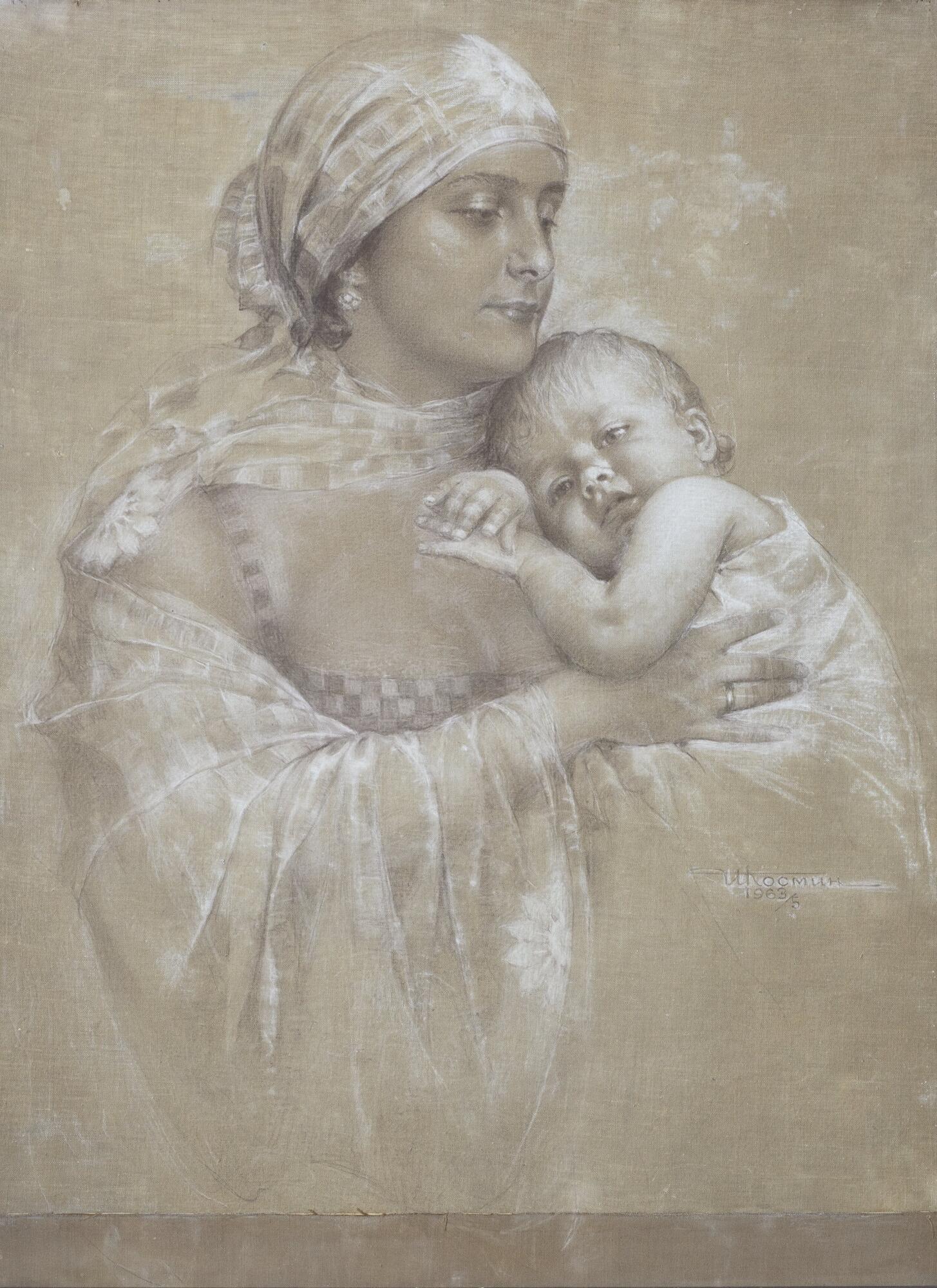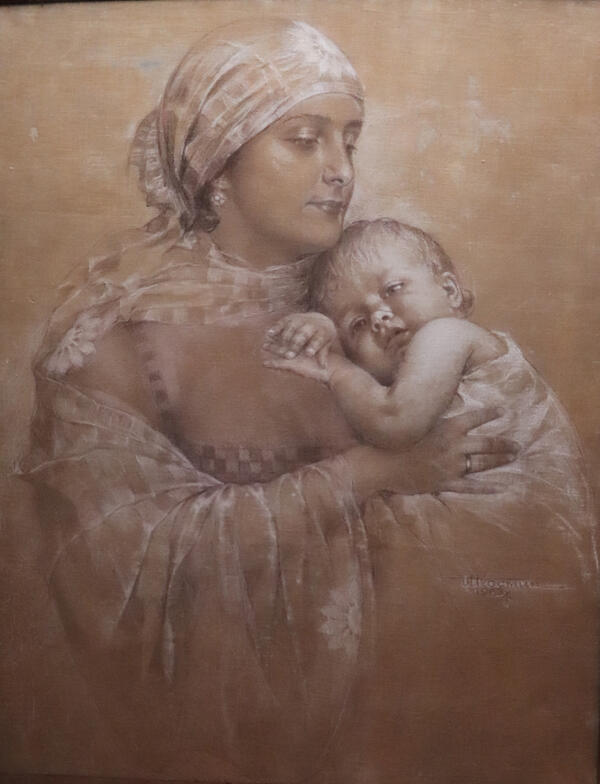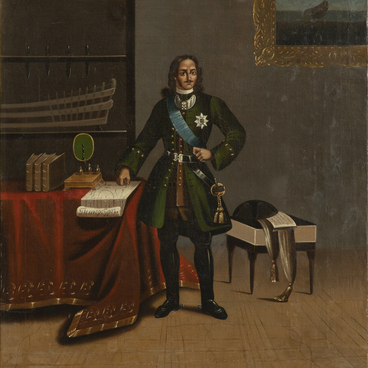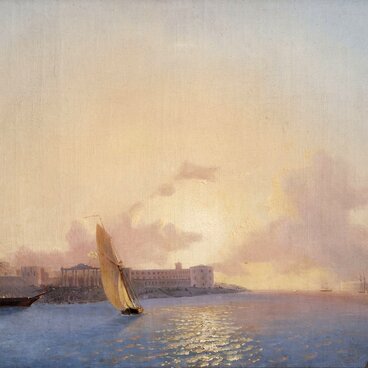Ivan Vladimirovich Kosmin was born in the village of Slepukha into a poor peasant family in 1882. He began his artistic education in a drawing studio in Voronezh, where he was able to prepare for admission to the Penza Art School in 1906.
Having finished the art school, he entered the St. Petersburg Academy of Arts without exams as the best student. In 1912, Kosmin started to study in the class of Vladimir Yegorovich Makovsky. In 1916, he graduated from the Academy with a gold medal. In the same year, at the annual autumn academic exhibition, his work “Portrait of a Woman” was awarded a gold medal named after the French portrait painter Elisabeth Vigée-Lebrun.
His work immediately became a subject of public interest. The artist’s favorite genre was portrait painting. He had the gift to convey the features of his models with documentary accuracy. The pastel technique always attracted Ivan Vladimirovich Kosmin. As the painter himself noted, “pastel is very beautiful, it is pleasant to draw with it.” He also added that the finest color tones achieved by pastel help to convey the beauty of the human image.
His female portraits were full of special charm. The collection of the Lipetsk Regional Museum of Local Lore contains several works by Ivan Kosmin, including the portrait “Mother and Child”. This painting found its history there. A woman from Lipetsk identified the woman portrayed by the painter as her mother.
After lengthy research, it turned out that the artist made the sketch for this portrait in the first post-war years, and it was completed only in 1963. The prototype of the heroine was a resident of the village of Talitsa (now the Krasninsky district of the Lipetsk region) Antonina Mikhailovna Selezneva, nee Akhmatova.
On one of his post-war visits to his homeland, the village of Slepukha, the artist drove to Talitsa to buy apples, when he saw a young woman who became the prototype of a beautiful stranger in his canvas.
The portrait depicts a beautiful female face of the Russian “Madonna”, which embodied dignity, motherhood, and kindness. The hair is pulled back under a scarf, which only emphasizes the beauty of the face. This work, like all portraits of Ivan Vladimirovich Kosmin, is distinguished by soft coloring and emotionality of the image.
Having finished the art school, he entered the St. Petersburg Academy of Arts without exams as the best student. In 1912, Kosmin started to study in the class of Vladimir Yegorovich Makovsky. In 1916, he graduated from the Academy with a gold medal. In the same year, at the annual autumn academic exhibition, his work “Portrait of a Woman” was awarded a gold medal named after the French portrait painter Elisabeth Vigée-Lebrun.
His work immediately became a subject of public interest. The artist’s favorite genre was portrait painting. He had the gift to convey the features of his models with documentary accuracy. The pastel technique always attracted Ivan Vladimirovich Kosmin. As the painter himself noted, “pastel is very beautiful, it is pleasant to draw with it.” He also added that the finest color tones achieved by pastel help to convey the beauty of the human image.
His female portraits were full of special charm. The collection of the Lipetsk Regional Museum of Local Lore contains several works by Ivan Kosmin, including the portrait “Mother and Child”. This painting found its history there. A woman from Lipetsk identified the woman portrayed by the painter as her mother.
After lengthy research, it turned out that the artist made the sketch for this portrait in the first post-war years, and it was completed only in 1963. The prototype of the heroine was a resident of the village of Talitsa (now the Krasninsky district of the Lipetsk region) Antonina Mikhailovna Selezneva, nee Akhmatova.
On one of his post-war visits to his homeland, the village of Slepukha, the artist drove to Talitsa to buy apples, when he saw a young woman who became the prototype of a beautiful stranger in his canvas.
The portrait depicts a beautiful female face of the Russian “Madonna”, which embodied dignity, motherhood, and kindness. The hair is pulled back under a scarf, which only emphasizes the beauty of the face. This work, like all portraits of Ivan Vladimirovich Kosmin, is distinguished by soft coloring and emotionality of the image.



